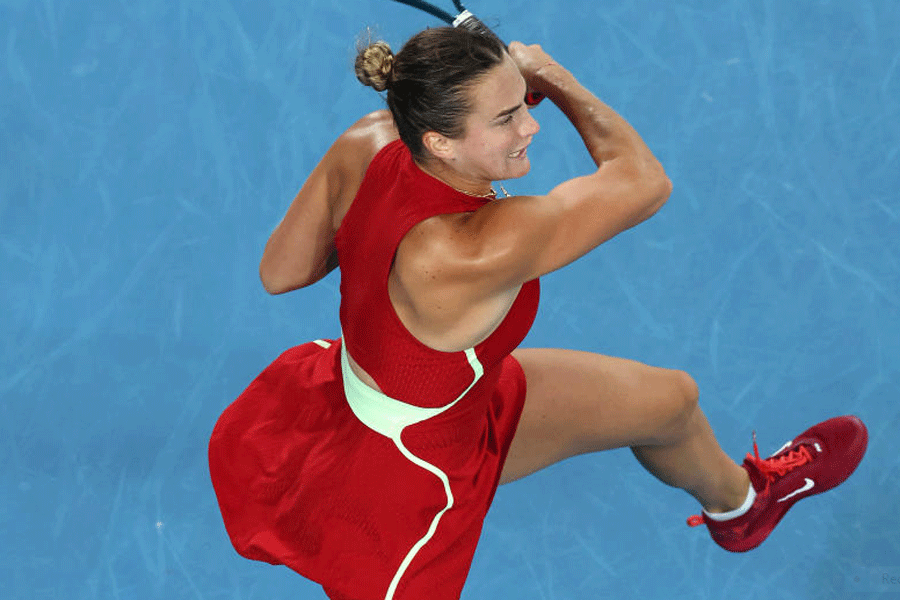The year’s first grand slam is just about halfway through and already the women’s competition is showing its inconsistent side. Only three of the top 10 seeds survived till the fourth round, with Aryna Sabalenka, seeded second, holding fort for the stars.
In 2023, four different women won the four grand slams — Sabalenka, Iga Swiatek, Marketa Vondrousova and Coco Gauff.
While there is a point of view that argues that the lack of complete domination by one or two players is what makes the women’s game exciting, there can be no
doubt that what it lacks now is a superstar — a champion of the calibre of Steffi Graf, or Martina Navratilova or Serena Williams.
There is hardly a player now for whom spectators would come to the stadiums in droves. The game lacks an intense rivalry like the ones witnessed in the past between Navratilova and Chris Evert or Graff and Monica Seles.
It lacks a player who would own the game for years, hardly letting any peer come close to her stats like Serena did.
In fact, since Serena won the last of her 23 grand slam singles titles (the most in the Open Era, and the second-most of all time) at the Australian Open way back in 2017, women’s tennis has been seeking a dominant star. But that void has not yet been filled.
A look at the last five years will see that 12 women have won a grand slam singles title with only three — Ashleigh Barty, Swiatek and Naomi Osaka — having multiple titles to their name.
All the top 10 seeds at the Australian Open this year — Swiatek, Aryna Sabalenka, Elena Rybakina, Gauff, Jessica Pegula, Ons Jabeur, Vondrousova, Maria Sakkari, Barbora Krejcikova and Beatriz Haddad Maia — on paper at least seemed to have a fair chance of winning the Open. But seven of them, including the world No.1 and top seed Swiatek, have bowed out just a week deep into the tournament.
The WTA has long been fighting for pay parity with the men’s ATP. That is definitely the right thing to do. But on the flip side, one cannot deny that there is a dearth of big names in the women’s game right now who can consistently dominate and generate interest among fans.
Former India star and Davis Cup coach Jaidip Mukerjea feels there is not much separating the top 5 from the next 45. “I think a lot of young girls are coming up, mostly from East European countries. They are unknown names but are very hungry. I also feel the top seeds of this generation are not in the same league as say a Serena Williams or a Steffi Graf. There is a gap. Sabalenka is erratic. Iga is the world No.1 but she does not dominate as (Novak) Djokovic or (Roger) Federer or (Rafael) Nadal did in the men’s game.
“I don’t think there is really much separating the top 50 players now. On a given day, anyone can beat anyone. But then again, that also makes the game more exciting. There is more competition.”
India’s former Fed Cup coach Rico Piperno feels there is no one in the game right now who is capable of dominating completely. “Post Serena there really has been no one player who commanded that kind of respect. Iga came close, but if Serena gets 9 out of 10, Iga would get maybe a 6 or 6.5.
“I think (Ashleigh) Barty had the capability. She was like a breath of fresh air in the women’s game. But she retired too soon. I feel women’s tennis has generally been very one-dimensional.
“They also lack the tenacity needed to play matches on the trot. I feel a very important factor is mental strength and the top players now are perhaps not as strong mentally as say the Williams sisters or Steffi Graf were.”
Take the case of Britain’s Emma Raducanu. At the 2021 US Open, Raducanu became the first qualifier in the Open Era to win a major singles title, beating Leylah Fernandez in the final without dropping a set during the tournament. Her victory kicked off a frenzy and she was looked upon as the next best thing for tennis. However, she has done very little of note on the court since.
Australia’s Barty, who seemed to have the potential of filling up the void of a long-term champion with three grand slam titles within four years, shocked the fraternity by retiring while being the world No.1 in 2022.
Naomi Osaka, with four grand slam titles under her belt, struggled with mental health issues and is trying to make a comeback after having her first child.
Swiatek, who at one point had raised hopes of bringing the X factor back, has somehow lost that edge. Though still ranked No.1 in the world, she is no longer as much in charge as she was in 2022.
There is no dearth of talented players, but what has been lacking is one who is ready for the long haul. Consistency, the ability to last the season and staying power — those are the need of the hour.
The game needs a champion to rely on, someone who will demand respect on the court, someone who will deliver when expected. And that is sadly lacking in the women’s game at present.











